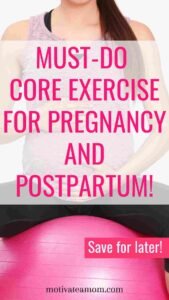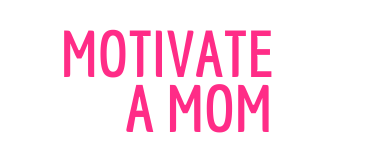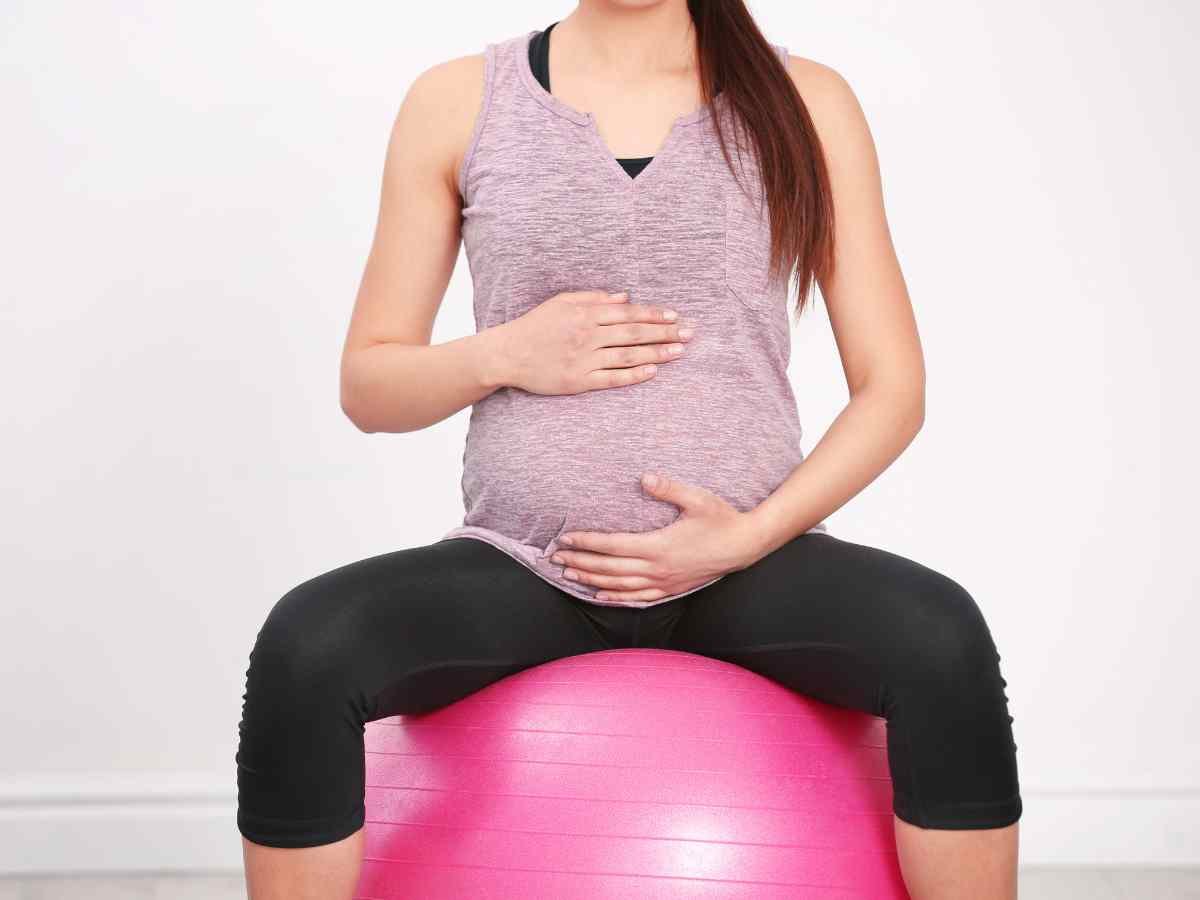Must-Do Core Exercise for Pregnancy and Postpartum: Connection Breath
Strengthen Your Core Throughout Pregnancy and Postpartum With the Connection Breath
Wondering how you can safely work your core during pregnancy? Want to prevent or manage diastasis recti, pelvic pain, back pain, or urinary incontinence? If you said yes to any of those, keep reading! The Connection Breath is a core exercise that you must-do during pregnancy and postpartum to help strengthen and recover your core.
Other core exercises, like crunches, can do more harm than good. Even front planks can be harmful during pregnancy and postpartum if done with a compromised core. The Connection Breath exercise is safe and it will ensure that you have a strong, well functioning core.
This exercise is crucial for you to do throughout pregnancy and while you recover postpartum. I’ll break down the Connection Breath exercise step-by-step so you’ll feel comfortable including it into your routine so you can build a strong core!
*Disclaimer – If you are a postpartum, pregnant or have any other health conditions, make sure you always seek the advice of your physician or other qualified health care provider. Content on this blog should not be considered a substitute for professional medical advice, expertise, or treatment. Also, this post may include Amazon affiliate links which means I would earn a small commission if you decide to make a purchase through the link. You can read my full disclaimer here.
Anatomy of the Core and Pelvic Floor
Let’s first look at what makes up the core. The core consists of 4 main parts: diaphragm, multifidi, transverse abdominis, and the pelvic floor muscles.

Diaphragm:
The diaphragm is a respiratory muscle located below the lungs, separating the chest from the abdomen. It has a very important role in breathing because when it contracts and relaxes it pushes and pulls air in and out of the lungs.
Transverse abdominis (TVA):
The Transverse abdominis or TVA is one of the deepest abdominal muscles wrapping around the core. It plays a vital role in protecting and supporting the abdominal organs by maintaining abdominal wall tension. This also results in stabilization of the spine and pelvis.
Multifidi:
The multifidus muscles run along the vertebrae on both sides of the spine. They are responsible for stabilizing the spine during movements, which also protects it from injury. A weak multifidus is associated with low back pain. [1]
Pelvic Floor Muscles:
The pelvic floor consists of layers of muscle and connective tissue that stretches from the pubic bone to the coccyx. Their role is to support and protect organs, such as bladder, bowels, and uterus. Not only do they help maintain internal pressure, but also external pressure (i.e., weightlifting). They also relax and constrict to pass stool, urine, or gas. Like the other muscles of the core, the pelvic floor also helps stabilize the trunk.
These muscles work in conjunction together by increasing or decreasing in activity to produce smooth, efficient, and stable movements. Whether you are squatting weight or carrying a car seat, your core is adjusting accordingly to whatever activity it is you are doing.
One way to visualize the core is like a canister. The top of the can is the diaphragm, and supporting the bottom is the pelvic floor muscles. The back is the multifidi and wrapping around the can like a corset are the abdominal muscles.

Now let’s discuss what the Connection Breath is and how it can help the core muscles work more efficiently together to produce a well-functioning core.
What is the Connection Breath?
The connection breath is a breathing pattern that integrates the deep core muscles with the muscles of the pelvic floor.
Using the Connection Breath will help you develop a mind-muscle connection to these core muscles. This will help you relax and contract these muscles through their full range of motion. It will also ensure you establish a more efficient way of breathing, known as diaphragmatic breathing.
Why the Connection Breath Core Exercise is Important for Pregnancy and Postpartum
As our bellies grow throughout our pregnancy, we experience a lot of changes. These changes include increased pressure placed on our pelvic floor as well as our abdominal wall.
The Connection Breath exercise will help us better recruit these core muscles so we can strengthen our pelvic floor and better manage intra-abdominal pressure.
An optimal functioning core:
- Stabilizes the core.
- Maintains a healthy back.
- Provides support for pelvic organs.
- Regulates intra-abdominal pressure.
A core that might not be functioning properly can result in or poorly manage:
- Diastasis recti
- Hernia
- Pelvic floor dysfunction
- Pelvic organ prolapse
- Urinary and fecal incontinence
Focusing on a strong and well-functioning core isn’t only important during pregnancy, but also postpartum. After we give birth, we are left with a weakened core and some degree of abdominal separation.
During this stage our focus should be strengthening and reconnecting to our core. Doing this will ensure that we have rehabbed our core and it is functioning optimally before we jump back into our regular activity. If we neglect this, it could lead to worsening or developing any of the conditions above.
The Connection Breath: Alignment, Breathing, & Connection
When learning how to do the Connection Breath we will focus on three main components: alignment, breathing, and the connection.
What is Proper Alignment for The Connection Breath?
When starting the Connection Breath, you want to make sure you are in a neutral alignment.
Though there is no such thing as a “perfect” posture, good posture is being in a neutral alignment. This means stacking your ribcage directly over your pelvis.

From a standing side view, you can imagine drawing a vertical line from your ear to your ankle bone. This vertical line should be close to crossing the middle of your shoulder, hip joint, and knee joint.
If you are sitting, focus on stacking your ribs over your pelvis and be aware that your ribcage is not flaring, and your shoulders aren’t rounding forward.
How to Breathe During the Connection Breath
Now that you found your appropriate alignment, let’s dig deeper into how to properly breath.
Notice how you are breathing now. Do you notice your chest or shoulders rising? Do your breaths feel short or shallow? If so, this is called chest breathing. With chest breathing, air cannot efficiently fill the lungs and it also puts more stress on the shoulders, neck, and chest.
The kind of breathing you should be focusing on is Diaphragmatic breathing. This breathing helps relieve stress and helps you relax, activates the deep core muscles, reduces strain during exercise, and increases oxygen intake. [2]
When we breath, our diaphragm and pelvic floor naturally move together.
During the inhale our chest cavity expands, our diaphragm flattens and descends, pressure builds in the abdomen, and the pelvic floor muscles descend.

On the exhale, our ribcage deflates, the diaphragm ascends, and the pelvic floor muscles ascend.

How to do Diaphragmatic Breathing
- Get into a comfortable position. You can sit with ribcage stacked over pelvis and on your sitting bones. Or lie on your back with knees bent.
- Place one hand on your ribcage and the other hand just below on your belly.
- Inhale through your nose and think about breathing into your hands.
- Try for a 360-degree breath expansion (think about your ribcage opening like an umbrella) – filling your ribs, belly, sides, and back with air.
- Exhale slowly through mouth and feel your hands descend.
- Inhale and exhale slowly without forcing expiration.
How to Connect Your Core to Breath
Now that you have proper alignment and breath in place, you can now add the third piece – the connection. With the connection you are connecting your breath to your core in a sequence of contracting and relaxing.
Our pelvic floor is just like any other muscle, when it contracts it shortens (concentric), and when it relaxes it lengthens (eccentric). Think about taking it through its full range of motion with each breath. When you inhale, allow your pelvic floor to completely relax and lengthen. On the exhale, you will contract the pelvic floor and think about lifting it up.
Learning to properly contract and relax your pelvic floor is essential. Don’t just think about doing a Kegel, instead we want to take the pelvic floor through its full range of motion.
Here are some cues to help you contract and relax your pelvic floor:
- Think about picking up a bean with your vagina and anus (contract/exhale) then letting it go (relax/inhale).
- Think about your pelvic floor being shaped like a diamond. Now bring all four corners together (contract/exhale), then let it expand back to the diamond (relax/inhale).
- Think about sucking through a straw with your vagina (contract/exhale).
- Think about your pelvic floor as a flower. The flower is blooming (relax/inhale) and then it’s closing (contract/exhale).
- Imagine your pelvic floor as an elevator. When you inhale it goes from the highest level to the ground floor (relax). Then you exhale and the elevator goes from the ground level to the highest floor (contract).

Once you’ve learned how to connect the pelvic floor to breath, you will connect to your transverse abdominus (TVA). It’s crucial you don’t just bear down and grip into your upper abs. You are also not sucking your belly in here.
Here are some cues to help you contract your transverse abdominus:
- Think of your TVA as a corset. As you inhale, you loosen the corset (relax). When you exhale, pull the strings to tighten the corset (contract) while pulling your belly button in and up towards your sternum.
- Bring your hip bones together on the exhale (contract).
- Think of zipping up a pair of tight jeans. Pull the zipper up on the exhale (contract).
- Imagine a tide rolling in (contract) and out (relax).
We’ve covered proper alignment, diaphragmatic breathing, and connecting your core to your breath. Now let’s put it all together!
How to Perform the Connection Breath Core Exercise
- Start by sitting on a bench or chair with your ribcage stacked over pelvis.
- Place one hand on your abdomen and another hand on your ribcage.
- Take a slow, relaxed inhale through your nose. Focusing on your 360-degree expansion and breathing through your hands. There should be minimal activity in your chest and shoulders.
- As in you inhale, relax your pelvic floor and let it lengthen. Think of the sensation of using the bathroom or your vagina or anus opening up like a flower.
- Then exhale, pull your belly button in and up towards your sternum. Contract and lift your pelvic floor. Think of the sensation of holding gas or urine.
How to Program the Connection Breath Core Exercise for Pregnancy and Postpartum
There’s different ways you can program this exercise depending on what your goal is and what stage of pregnancy or postpartum you are in. Below will cover some ways to include this exercise into your routine.
Connection Breath Exercise
During pregnancy, the Connection Breath is safe to do during all trimesters. You can do it on its own to help build and maintain strength in the pelvic floor and abdominals.
As you progress into the final weeks of pregnancy, it may be a good idea to limit the amount of pelvic floor contractions and focus more on relaxation and “letting go”. This will help prepare the pelvic floor to relax for birth so the baby can move down the birth canal.
The Connection Breath is also one of the first exercises you can do postpartum. This is beneficial in helping you reconnect to your core and rebuilding strength in the core and pelvic floor. It will also help you regain tension in the linea alba (connective tissue between “6 pack” muscles), which weakens and stretches throughout pregnancy to make room for growing baby.
If doing this exercise on its own, you can just focus on the breath portion or you can incorporate pelvic floor contraction holds to work on the slow twitch muscles fibers of the pelvic floor. To do this start by doing 2-3 sets x 8-12 repetitions with a 6-8 second holds 2-3 times per week. To do the holds you can go through the inhale and exhale, hold contraction on exhale and continue breath while holding contraction.
Connection Breath Warm-Up
Connection Breath is also great to incorporate during warm-ups in pregnancy and postpartum workouts. The benefit of this is to create awareness of pelvic floor engagement and to wake up the core muscles.
For example, if you are doing barbell squats, start with standing connection breaths, then body weight squats incorporating the connection breath.
If doing this as a warm-up, do 8-10 Connection Breaths or 2-3 minutes and you could also incorporate it into the exercise you are warming up for.
You can also perform 8-10 Connections Breaths or 2-3 minutes as part of a relaxing cool-down as well.
Connection Breath During Exercise
Another way you can program the Connection Breath is to include it with exercises you are doing. This is very important because it helps you to avoid bearing down and instead teaches you to breathe throughout the exercise.
During higher load exercises controlling intra-abdominal pressure is essential during pregnancy and during postpartum recovery. For example, if you are doing Barbell Squats, you will perform the Connection Breath throughout the lift. As you lower to the floor you will inhale, and as you rise you will exhale and do a quick contraction of the pelvic floor. Think about exhaling on the hard part of the exercise or during exertion and inhaling during the easier part.
How to Progress the Connection Breath Exercise
Just like any other exercise, there are ways to progress the Connection Breath. Some ways to progress this would be to perform it in different positions. For example, you could start with sitting, move to kneeling, to half-kneeling, then standing.
You could also increase sets, repetitions, or incorporate longer holds. Progress slowly and choose only one thing to progress at a time. For example, you may start with 1 set x 6 breaths with 6 second holds. Then progress to 1 set x 8 breaths with 6 second holds.
The Best Core Exercise for Pregnancy and Postpartum: Connection Breath Conclusion
The connection breath exercise is crucial for pregnant and postpartum women. It teaches you to connect your breathing to your core which results in a stronger, more efficient core that can manage internal and external pressure more optimally.
Having an optimally functioning core is essential for preventing and or managing pregnancy and postpartum related conditions such as diastasis recti, pelvic pain, and urinary incontinence.
I hope after reading this you now have a better understanding of the importance of the Connection Breath and how to perform this vital core exercise!
Similar posts about exercise in pregnancy and postpartum:
Share this valuable information will all your pregnant and postpartum friends!

References:
[1] https://www.physio-pedia.com/Lumbar_Multifidus
[2] https://my.clevelandclinic.org/health/articles/9445-diaphragmatic-breathing


Excellent read, thank you!
Thank you! I’m happy you enjoyed the content 🙂